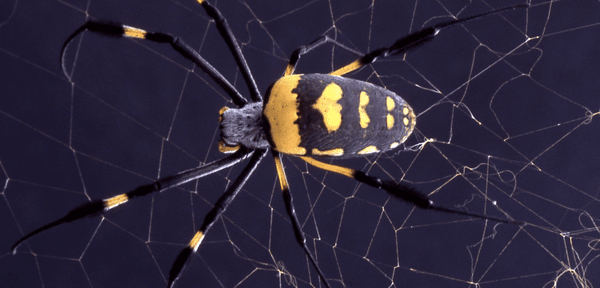Magic Of Spider Webs Inspire Scientists To Develop New Material
That silky spider net has been awe-inspiring to observant minds for the beauty of the web's chemistry. In fact, psychologically, the “web†word strikes our mind and compels us to imagine the octagonal spider wire jargon, if not the World Wide Web information space has already overcrowded it. Such a structure has some more interesting properties and intrigued scientists to think how the spider web has been a success maker when it comes to catching flies or helping it withstand wind blow.
Putting some hands-on experiments at it, we can find that a spider-web never sinks but rather it possess a tight structure if stretched wider than their original length-wise size. According to the latest study by a group of researchers from University of Oxford, the aforementioned phenomena is due to a unique coiling or spooling feature possessed by the web. They say, while it is stretched any loose thread is spooled back to little glue drops oriented on the gossamer fiber-made spiral spider web structure.

Nephila senegalensis
Inspired by the spider capture silk, the group has also devised an artificial structure with the help of a ‘liquid web’ technique which can utterly mimic the spider web by simply expanding like a solid and shows little compressibility like a liquid. Professor Fritz Vollrath of the Oxford Silk Group in the Department of Zoology at Oxford University expressed that a mere spider web includes a very complex mechanism. The structure with tiny droplets can spool back any loose ends which ultimately help the structure to retain its shape and size.
Scientists from the same group implied that the experimental results include two important physics phenomena encompassing fibre elasticity and droplet surface tension. Owing to oil droplets and plastic threads, the group was able to result in a customized replica of the spider-web which apparently relies on the same mechanism.
Dr Hervé Elettro, the first author further added his views which means that the spider web material is an interesting one for people working with biology, chemistry and medicine. Though it works as a high-tech hunting tool for spiders it has a lot more to offer in related fields and amazes us with its reeling and unreeling property. The research has been published in the PNAS journal and has been funded by the Agence Nationale de la Recherche, Royal Society,
Centre national de la recherche scientifique,European Research Council and the United State Air Force Office of Scientific Research.
Watch the technique produced:
Source: <a href="https://www.ox.ac.uk/news/2016-05-16-scientists-create-novel-liquid-wire-material-inspired-spiders-capture-silk" target="_blank" rel="nofollow noopener noreferrer">Scientists create novel 'liquid wire' material inspired by spiders' capture silk | University of Oxford</a>
Putting some hands-on experiments at it, we can find that a spider-web never sinks but rather it possess a tight structure if stretched wider than their original length-wise size. According to the latest study by a group of researchers from University of Oxford, the aforementioned phenomena is due to a unique coiling or spooling feature possessed by the web. They say, while it is stretched any loose thread is spooled back to little glue drops oriented on the gossamer fiber-made spiral spider web structure.

Nephila senegalensis
Inspired by the spider capture silk, the group has also devised an artificial structure with the help of a ‘liquid web’ technique which can utterly mimic the spider web by simply expanding like a solid and shows little compressibility like a liquid. Professor Fritz Vollrath of the Oxford Silk Group in the Department of Zoology at Oxford University expressed that a mere spider web includes a very complex mechanism. The structure with tiny droplets can spool back any loose ends which ultimately help the structure to retain its shape and size.
Scientists from the same group implied that the experimental results include two important physics phenomena encompassing fibre elasticity and droplet surface tension. Owing to oil droplets and plastic threads, the group was able to result in a customized replica of the spider-web which apparently relies on the same mechanism.
Dr Hervé Elettro, the first author further added his views which means that the spider web material is an interesting one for people working with biology, chemistry and medicine. Though it works as a high-tech hunting tool for spiders it has a lot more to offer in related fields and amazes us with its reeling and unreeling property. The research has been published in the PNAS journal and has been funded by the Agence Nationale de la Recherche, Royal Society,
Centre national de la recherche scientifique,European Research Council and the United State Air Force Office of Scientific Research.
Watch the technique produced:
Source: <a href="https://www.ox.ac.uk/news/2016-05-16-scientists-create-novel-liquid-wire-material-inspired-spiders-capture-silk" target="_blank" rel="nofollow noopener noreferrer">Scientists create novel 'liquid wire' material inspired by spiders' capture silk | University of Oxford</a>
0
